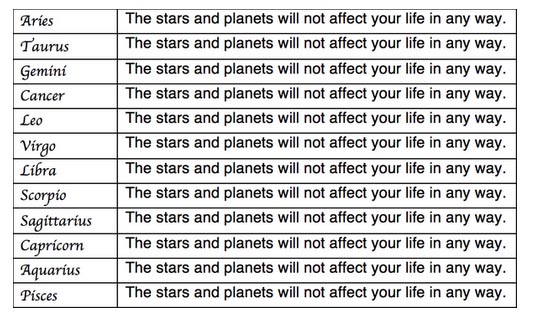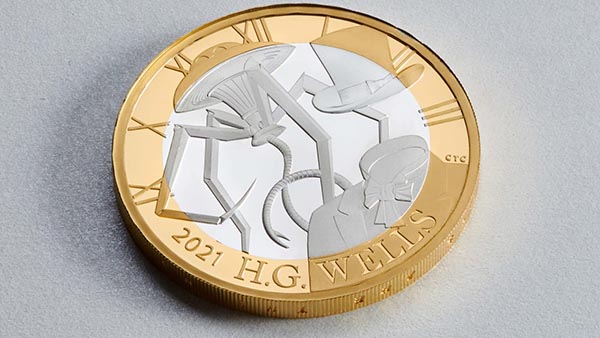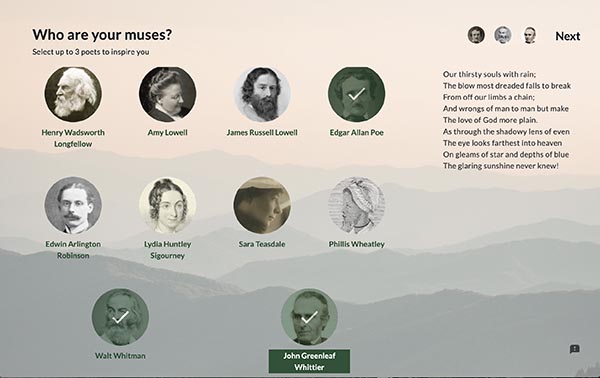Your Friday Ukulele Orchestra Cover of “Happy”
(Recorded pre-COVID.)
My New Year's resolution is to annoy less grammar pedants.
— Richard Osman (@richardosman) January 1, 2021
Year in Preview
One of our go-to economics blogs is Barry Ritholtz’s The Big Picture. As always, he offers his “preview” of the year to come with his usual caveat:
This is the time of year when firms trot out their annual Year in Preview outlooks.
These are counter-productive exercises for investors. First, they are little more than guesses. I mean that literally; there is no valid science to estimating stock prices, interest rates, inflation, bond yields, gold, bitcoin or whatever 12 months out.
Consider: How many strategists had “Global Pandemic, one million deaths, 34% market crash, but with huge gains in FAANMG stocks and a 12% annual S&P500 gain” in their 2020 Outlooks? None.
He goes on, but the upshot is:
Here is my outlook for 2021: We will all be even more sick to death of lockdown, more bored silly working from home, and damned tired of re-living the same Groundhog day over and over again. I predict Covid fatigue is no joke: it is real, and dangerous and frustrating as hell. At least there is some light at the end of the tunnel, with at least 3 vaccines in the late stages of approval. With a little bit of luck, maybe life begins to return to normal next summer.
I challenge you to find a more truthful 2021 outlook.
Don’t even get him started on astrology:

Screenplaying
For the first time in L.A., the number of people with COVID exceeds the number of people with screenplays.
— J. Elvis Weinstein (@JElvisWeinstein) December 22, 2020
It’s Not Easy Being a Blinking Green Light
On January 1, works from the year 1925 officially entered the public domain. They include short stories by Ernest Hemingway, Virginia Woolf’s novel Mrs. Dalloway, songs by Ma Rainey, Bessie Smith, and Duke Ellington, and a whole lot more. Oh, and the list of works that we, the American people, now own also includes F. Scott Fitzgerald’s The Great Gatsby. As HuffPost points out, this opens the door to all sorts of new adaptations and retellings—in particular, perhaps, a Muppets version.
Many people envisioned Kermit playing the title character, Jay Gatsby, with Miss Piggy as his beautiful obsession, Daisy Buchanan.
Some people also suggested that the book’s narrator, Nick Carraway, be the lone role to be cast with a human actor, a la Michael Caine in “The Muppets Christmas Carol.” Others suggested that honor go to the character of Gatsby himself.
Given the novel’s ending, do we really want Kermit the Frog as Gatsby? That would be rather grim.
Anyone asking for a Muppet version of The Great Gatsby has not read The Great Gatsby. pic.twitter.com/bWbayCoOzl
— Ken Plume (@KenPlume) January 3, 2021
Eloi Vey
In another case of folks not having read the works they are celebrating, a new British coin commemorates author H.G. Wells, who died 75 years ago. However, à la those old picture puzzles from Highlights magazine, Gizmodo asks, “Can You Spot What's Wrong With the UK's New H.G. Wells Commemorative Coin?”

The first is a fair point, the second is probably a little nitpicky:
The detail that first caught the eye of Wells’s fans on social media was the fact that the “monstrous tripod” described in The War of the Worlds is depicted on the coin as having four legs—rendering the iconic fighting machines of invading Martians as a quadruped. On a more subtle level, some fans have taken issue with the coin’s depiction of the Invisible Man’s hat.
Adam Roberts, author of a biography of Wells and vice president of the H.G.Wells Society, told the Guardian that the gesture is nice, in general, but the tripod mistake “is hard to comprehend.” Roberts said the Invisible Man wore a “wide-brimmed hat” that characterized him as “distinctly ungentlemanly.” On the coin, we see the character filling out a suit with a top hat adorning the space where his head would be.
Chalk it all up to artistic license.
Eco System
"The Printed Book is like the spoon, once invented it cannot be improved."
— Paul Holdengraber (@holdengraber) January 5, 2021
~ Umberto Eco
Born on this day, in 1932 pic.twitter.com/i9nuT2mfuw
AI-Yi-Yi, Part the Infinity: For Better or Verse
Have you always wanted to write poetry but just lack the talent? Well, Google’s AI-driven Verse By Verse can draw on some of America’s classic poets to help you piece together your ideal poem. Says Engadget:
You can select up to three poets for inspiration, including the likes of Emily Dickinson, Walt Whitman and Edgar Allen Poe. Once you've made your choices and picked a structure for your poem, the tool will ask you to compose your first line of verse. The AI will then suggest some more options.
OK, we’re game for anything. The first thing you do is select your poetic muses:

Then select a poem structure. A quatrain would be fine, and we’ll leave the syllable count and rhyme scheme to the defaults:

You then write your first line to get started, and that will inspire your muses who then offer suggestions for the second line and beyond. For help with the first line, we turned to the WhatTheyThink home page:

As you move through the lines, you can mix and match suggestions from your muses:

You can then go back and edit it, if you don’t like the idea of rhyming “systems” with “system,” or if you want to be stricter about enforcing the rhyme scheme. Alternately, you can add stanzas.
Verse By Verse would be perfect for generating our article and video abstracts.
AI-Yi-Yi, Part the Infinity: Hello, DALL-E
So AI can now create poems, but what about visual art? Well, say hi to DALL-E. Named using a portmanteau of the artist Salvador Dalí and Pixar’s WALL·E:
DALL·E[1] is a 12-billion parameter version of GPT-3 trained to generate images from text descriptions, using a dataset of text–image pairs. We’ve found that it has a diverse set of capabilities, including creating anthropomorphized versions of animals and objects, combining unrelated concepts in plausible ways, rendering text, and applying transformations to existing images.
For example, say you wanted to draw an illustration of a baby daikon radish in a tutu walking a dog (as one does). You would enter a text prompt “an illustration of a baby daikon radish in a tutu walking a dog” and DALL-E would gie you several variations on the theme:

They continue:
GPT-3 can be instructed to perform many kinds of tasks solely from a description and a cue to generate the answer supplied in its prompt, without any additional training. For example, when prompted with the phrase “here is the sentence ‘a person walking his dog in the park’ translated into French:”, GPT-3 answers “un homme qui promène son chien dans le parc.” This capability is called zero-shot reasoning. We find that DALL·E extends this capability to the visual domain, and is able to perform several kinds of image-to-image translation tasks when prompted in the right way.
But uh-oh:
We did not anticipate that this capability would emerge, and made no modifications to the neural network or training procedure to encourage it.
Danger, Will Robinson!
Still, this would be great for generating unique editorial imagery for when Shutterstock comes up short to too cheesy. It looks like it could also be used for comping signage. For example, a text priompt could be: “a store front that has the word ‘openai’ written on it”:

Map My Lack of Ride
Map of Tesla charging stations 1437 AD#Map #Maps #Terriblemaps #TerribleMap #Tesla pic.twitter.com/rI4M1B4JTq
— Terrible Maps (@TerribleMaps) December 29, 2020
One Step Beyond
Late last month, the NY Times had an oral history of a marketing promotion that apparently has become something of a cultural icon: the oversized Bed Bath and Beyond coupon.
RITA LITTLE (vice president, marketing, 1997-2013) They had probably 60 stores. My mission was to help them get to 100. Saying it out loud is pretty funny.
There was a need for a Fourth of July-type promotion. It was going to be a postcard, probably with some outdoor-living kinds of things on it. And we needed something with a little extra zing. We decided to try 20 percent off one item. I’ll just say that we knew people reacted. It moved the needle.
We had an outside agency, Berenter Greenhouse & Webster. Bill Berenter, he saw the postcard for what it could be, I believe. We went to them and said that we were playing with this little postcard, and they are getting buried in the mail. The agency did all these markups, and they came up with this big, blue thing.
It was big enough that when you put it into a pile of business letters and bills, you can see it behind all the other letters. They came in with a stack of mail, and had it tucked right behind, and sure enough, he was right.
We tried all the hot colors, red, yellow. They were just too harsh. We went with Pantone 2735c.
Getting Ahead of One’s Selfie
In 1839, Robert Cornelius took the first ever selfie. Due to the long exposure time, he was able to set up the camera, uncover the lens and then run into shot. pic.twitter.com/bx53lMPQaG
— Quite Interesting (@qikipedia) December 11, 2020
Pez of Cake
For those of us who like to delve into the history of items we often take for granted, Smithsonian magazine recently looked at the unexpected origins of the PEZ dispenser.
PEZ was invented by Austrian confectioner Eduard Haas III who inherited his father’s baking goods company, which Haas pére had founded in 1894.
The success of Haas baking powder inspired the young businessman to pursue his interests in the confectionary world. An anti-smoking advocate, Haas III wanted to create a tablet that would “not only refresh one’s breath but could also help consumers who were anxious to cut down on smoking or overeating,” writes Shawn Peterson, company historian at PEZ Candy, Inc., in PEZ: From Austrian Invention to American Icon.
Peppermint candies were the rage at the time, but peppermint oil was expensive and needed to be boiled in order to be formed into candies. So Haas chemists went a different route. “PEZ tablets are made by compressing confectionary sugar and flavoring with thousands of pounds of force until each brick holds together. The candies didn’t originally come in dispensers but were instead packaged in metal tins or foil-paper wrapping.” As for where the word PEZ came from, it is actually the first, middle, and last letters of pfefferminz, the German word for peppermint.
PEZ tablets spent more than 20 years without a handy carrying container. The metal tins or paper rolls were meant to be carried in one’s pocket. But in the late 1940s, Haas realized that customers wanted a quick way to pick out a tablet with one hand, or share with a friend without dirtying the candies in the tin. Haas hired engineer Oscar Uxa to create a solution, and in 1949, the first PEZ dispensers were sold at the Vienna Trade Fair. The U.S. patent was granted in 1952.
Ironically, given that PEZ was intended to be a stop-smoking aid, the earliest dispensers looked remarkably like cigarette lighters.
The first PEZ dispensers, which are now called “regulars,” were such a success in Europe that the Ed. Haas Company needed to construct a second factory in Austria to keep up with demand. Ads showed off the convenience of a one-handed dispenser that was easy to use while driving and easy to share with others. Haas turned his attention to the American market. But there, PEZ’s meteoric rise came to a screeching halt. There just wasn’t much interest in smoking abatement, and PEZ needed to pivot fast.
See? We’re not the only industry that needs to “pivot.” So to crack the American market, they “pivoted” to marketing PEZ to kids and the character-based dispensers were a big part of that kid appeal.
Carbon Free
Hopefully they're just talking about emissions. https://t.co/RgFarK8s0Y
— J. Elvis Weinstein (@JElvisWeinstein) December 25, 2020
Cross Words
For those cruciverbalists out there who just can’t get through a day without doing the New York Times Crossword Puzzle, a new augmented reality version will either be really cool or really annoying. Your mileage may vary. Anyway, via The Verge:
A miniature New York Times crossword can now float above your couch, courtesy of an augmented reality effect available on the Times’ Instagram page. Pull up the effect on your phone, and a prompt will appear saying, “The crossword has shattered into pieces!” A small crossword sits on whatever surface you’ve picked, while a cloud of letter shards hovers above it. As you move your camera around, the change in perspective will reveal the words that solve the puzzle…. It’s a neat concept, but it’s not exactly the same as actually solving a crossword. Fiddling with your phone camera doesn’t require quite as much intellectual rigor as the Sunday puzzle, but taking a guess at the word you need can help you hunt for the right shapes in space.
please enjoy this clip of me desperately trying to find the right angle to arrange four letters pic.twitter.com/aQ7EMqjeDK
— crisp distancing?? (@crisp_red) December 22, 2020
Dolphin Temp
Medusa was asked not to return to Sea World pic.twitter.com/BxpoHN1raD
— Geeky??Steven (@geekysteven) January 4, 2021
Wooden Ships
Our peach of a Georgia correspondent pointed us to this article at Gizmodo: “Japanese Researchers Are Making Wooden Satellites Because We Have a Space Trash Problem.” It turns out that “space trash” is a serious issue, primarily—although not solely—for astronauts. Says NASA: “More than 500,000 pieces of debris, or ‘space junk,’ are tracked as they orbit the Earth. They all travel at speeds up to 17,500 mph, fast enough for a relatively small piece of orbital debris to damage a satellite or a spacecraft.” There are around 20,000 pieces of debris that are larger than a softball, and about 6,000 satellites currently in orbit, only 40% of which are functioning. A lot of space junk ends up falling into the atmosphere and burning up—but not entirely. “[A]ll the satellites which re-enter the Earth’s atmosphere burn and create tiny alumina particles which will float in the upper atmosphere for many years,” Takao Doi, an astronaut and Kyoto University professor, told the BBC when speaking about the project. “Eventually it will affect the environment of the Earth.” Hence the interest in wooden satellites.
Wood, however, would entirely burn up upon re-entry without leaving harmful substances in the atmosphere—or perhaps scattering dangerous debris. According to Nikkei Asia, another reason the researchers are experimenting with wood is that it doesn’t block electromagnetic waves or the Earth’s own magnetic field. That means wooden satellites could have simpler builds, as components like antennas could be placed inside the satellite itself.
…
For now, Sumitomo Forestry and Kyoto University are aiming to create a “proof of concept” and research tree growth and how wood materials behave in space. The next step, according to Doi, is to create an engineering model for the satellite, followed by a flight model. But even if wooden satellites don’t become a thing, it’s possible that whatever wood is developed could be used in more extreme environments on Earth.
To get an idea of how polluted the space around the Earth is, here is a NASA image tracking space debris.

Yuck!
North By North Quest
Laughing Squid points us to one of the strangest mashups we’ve ever seen: Darth by Darthwest, a series by French filmmaker Fabrice Mathieu that takes Cary Grant from scenes from North By Northwest and inexplicably puts him in Star Wars’ Millennium Falcon. If you are familiar with Hitchcock’s classic North By Northwest (here at Around the Web, it is easily a top 2 or 3 movie of all time), it’s actually quite hysterical. Check out Episode II:
Episode I remakes a classic movie sequence.
Stop It
Some idiot has stolen all the bus stop signs from along my road....
— Iwan Thomas MBE (@Iwanrunner) December 17, 2020
Honestly.... Where do these people get off?
Hail to the Tweet
Here at Around the Web, we doggedly avoid anything political, but one silly line in a CNN story caught our attention, more for statistical reasons than anything else: “No sitting president has ever been banned from Twitter.” That’s…uh, true, but of the 44 Presidents we’ve had, 41 of them predated Twitter. So if you adjust for that, a whopping one-third of sitting Presidents have been banned from Twitter, which is just as silly a line.
Actually, some of our past Presidents would have been great at tweeting. John Quincy Adams, for example, kept a diary with brief, often one-line tweet-like entries that the Massachusetts Historical Society actually did turn into a Twitter feed. And it’s a safe bet that Warren Harding would have been the Anthony Weiner of his day.
Faith in Something Bigger
This man has more faith in duct tape than I have in anything pic.twitter.com/NkPq4cRIrH
— Andrew Heaton ??(@MightyHeaton) January 3, 2021
Peehensile Tales
Put down whatever you’re drinking. This next paragraph is perfect spit-take fodder. From CNN:
Denmark's flagship broadcaster has suffered blowback over its newest children's TV program, "John Dillermand" -- an animation starring a man with a penis so massive and flexible it can save children from danger, fetch objects from a river and operate as a pogo stick.
…
The show was generally met with hilarity in Denmark and across the internet, with many praising it as an appropriate and light-hearted way to teach children about the human anatomy.
But some took issue with the main character's central trait. Danish politician Morten Messerschmidt, a member of the right-wing Danish People's Party, said children should not be forced to watch a cartoon depiction of an adult man's groin.
That’s usually pretty sage advice. Most of the commentary and criticisms were made before anyone had actually seen it. Once they did, though…
"Now the great majority here in Denmark are ... making fun of the few critics instead," Sarah Cecilie added. "Hundreds of thousands is supporting 'John Dillermand' now."
"In Denmark it is now a huge success, and the children are watching it in big numbers," she said, telling CNN that 200,000 people have viewed the first episode.
Going Bowling
Seems drastic to move a stadium. https://t.co/ij7Pxn8GLH
— J. Elvis Weinstein (@JElvisWeinstein) December 20, 2020
Spamburger
This appears to be a real thing, but for the love of all that’s holy, why? From Delish:
Set to roll out at McDonald's China, America's favorite burger joint is now delivering one of the most unique burgers out there: a Spam burger topped with Oreo crumbles. The announcement was made on Chinese social media platform Weibo last week and made its way to Twitter when video game analyst Daniel Ahmed tweeted about it. "Look, I saw this so you have to see it too. Sorry, that's how it works," he said in the tweet.
Mercifully, it’s a limited-time item. It launched on December 21 and they will only be making 400,000 of them. It’s a safe bet they’re still in stock.
McDonalds China is introducing a new Oreo x Spam burger on December 21. There will be 400,000 produced and sold.
— Daniel Ahmad (@ZhugeEX) December 18, 2020
(Look, I saw this so you have to see it too. Sorry, that's how it works). pic.twitter.com/QCiog64wAY
Game of Chicken
In other bizarre fast food news, it was initially thought that this was a joke or hoax, but, no, it’s a real thing. Via C|Net:
Back in June, a day after the PlayStation 5 reveal, KFC posted a video showing off its new KFConsole on social media, saying the gadget was "equipped with a chicken chamber" featuring a red-hot grill.
It was a fun prank at the time (in case you didn't know, you really can't grill or fry chicken inside a gaming console), but now it appears KFC has clarified that its gaming console is, in fact, real, but that the gimmick is that it keeps precooked KFC chicken warm. There's no grill or deep fryer inside the KFConsole, but it is a real gaming console that boasts an Intel Nuc 9 minicomputer and a swappable GPU slot.…
"Never risk letting your chicken go cold again thanks to the patented Chicken Chamber," Cooler Master's description says. "Utilizing the system's natural heat and airflow system you can now focus on your gameplay and enjoy hot, crispy chicken between rounds."
Let’s let that phrase sink in for a moment: Chicken Chamber.
My wife just confessed that for her entire childhood she thought Colonel Sanders’ bow tie was his whole body and now I can’t stop seeing a tiny stick body every time I look at him. pic.twitter.com/qVad6t93SA
— Freddie Campion (@FreddieCampion) December 16, 2020
Public Service Announcement
We’ve teamed up with @YETICoolers to help out road crews hit hard by COVID. John customized a one-of-a-kind cooler and we're auctioning it off to raise funds for Crew Nation— a global relief fund for live music crews. Enter the auction or make a donation: https://t.co/tyWpg9kGqE pic.twitter.com/0S5otMGtLh
— The Decemberists (@TheDecemberists) January 5, 2021
This Week in Printing, Publishing, and Media History
January 1
1772: The first traveler’s checks, which could be used in 90 European cities, are issued by the London Credit Exchange Company.
1773: The hymn that became known as “Amazing Grace,” then titled “1 Chronicles 17:16–17,” is first used to accompany a sermon led by John Newton in the town of Olney, Buckinghamshire, England.
1788: First edition of The Times of London, previously The Daily Universal Register, is published.
1879: English author and playwright E. M. Forster born.
1919: American soldier and author J. D. Salinger born.
1933: English dramatist Joe Orton born.
1970: The defined beginning of Unix time, at 00:00:00.
1971: Cigarette advertisements are banned on American television.
1983: The ARPANET officially changes to using the Internet Protocol, creating the Internet.
1984: The original American Telephone & Telegraph Company is divested of its 22 Bell System companies as a result of the settlement of the 1974 United States Department of Justice antitrust suit against AT&T.
1985: The first British mobile phone call is made by Michael Harrison to his father Sir Ernest Harrison, chairman of Vodafone.
1992: American computer scientist and admiral, co-developer of COBOL Grace Hopper dies (b. 1906).
1999: Euro currency is introduced in 11 member nations of the European Union (with the exception of the United Kingdom, Denmark, Greece and Sweden; Greece later adopts the euro).
January 2
1818: The British Institution of Civil Engineers is founded by a group of six engineers; Thomas Telford would later become its first president.
1920: American science fiction writer Isaac Asimov born.
1929: American author and screenwriter Charles Beaumont born.
January 3
1749: The first issue of Berlingske, Denmark’s oldest continually operating newspaper, is published.
1870: Construction work begins on the Brooklyn Bridge in New York.
1892: English writer, poet, and philologist J.R.R. Tolkien born.
1926: English composer, conductor, and producer George Martin born.
1947: Proceedings of the U.S. Congress are televised for the first time.
1957: The Hamilton Watch Company introduces the first electric watch.
1977: Apple Computer is incorporated.
2000: Final daily edition of the Peanuts comic strip.
January 4
1643: English mathematician and physicist Isaac Newton born.
1809: French educator, inventor of Braille Louis Braille born.
1853: After having been kidnapped and sold into slavery in the American South, Solomon Northup regains his freedom; his memoir Twelve Years a Slave later becomes a national bestseller.
1958: Sputnik 1, the first artificial Earth satellite, launched by the Soviet Union in 1957, falls to Earth from orbit.
1960: French novelist, philosopher, and journalist, Nobel Prize laureate Albert Camus dies (b. 1913).
1965: American-English poet, playwright, and critic, Nobel Prize laureate T. S. Eliot dies (b. 1888).
January 5
1932: Italian novelist, literary critic, and philosopher Umberto Eco born.
1944: The Daily Mail becomes the first transoceanic newspaper.
1953: The play Waiting for Godot by Samuel Beckett is first performed.
January 6
1838: Alfred Vail demonstrates a telegraph system using dots and dashes (this is the forerunner of Morse code).
1852: French educator, inventor of Braille Louis Braille dies (b. 1809).
1878: American poet and historian Carl Sandburg born.
1912: German geophysicist Alfred Wegener first presents his theory of continental drift. (Afterward, everyone slowly moved away from him.)
1931: Thomas Edison signs his last patent application.
1931: American novelist, playwright, and short story writer E. L. Doctorow born.
1946: English singer-songwriter and guitarist Syd Barrett born.
2000: Kerplonk! American cartoonist Don Martin dies (b. 1931).
January 7
1706: German publisher Johann Heinrich Zedler born.
1831: German postman and founder of the Universal Postal Union Heinrich von Stephan born.
1873: Hungarian-American film producer and co-founder of Paramount Pictures Adolph Zukor born.
1894: William Kennedy Dickson receives a patent for motion picture film.
1912: American cartoonist Charles Addams born.
1927: The first transatlantic telephone service is established from New York City to London.
January 8
1547: The first Lithuanian-language book, Simple Words of Catechism, is published in Königsberg.
1642: Italian physicist, mathematician, astronomer, and philosopher Galileo Galilei dies (b. 1564).
1775: English printer and type designer John Baskerville dies (b. 1706).
1824: English novelist, playwright, and short story writer Wilkie Collins born.
1862: American publisher and founded of the Doubleday Publishing Company Frank Nelson Doubleday born.
1889: Herman Hollerith is issued US patent #395,791 for the “Art of Applying Statistics”—his punched card calculator.
1904: The Blackstone Library is dedicated, marking the beginning of the Chicago Public Library system.
1935: Elvis Presley born.
1941: English actor, screenwriter, and Monty Python member Graham Chapman born.
1942: English physicist and author Stephen Hawking born.
1947: English singer-songwriter, producer, and actor David Bowie born.
January 9
1606: English printer William Dugard born.
1890: Czech author and playwright Karel ?apek born. His play R.U.R. coined the word “robot.”
1944: English guitarist, songwriter, and producer Jimmy Page born.
January 10
1754: English publisher, founder of The Gentleman’s Magazine Edward Cave dies (b. 1691).
1776: Thomas Paine publishes his pamphlet Common Sense.
1927: Fritz Lang’s futuristic film Metropolis is released in Germany.
1990: Time Warner is formed by the merger of Time Inc. and Warner Communications.
Anything catch your eye “around the Web”? Share it with us at [email protected].














